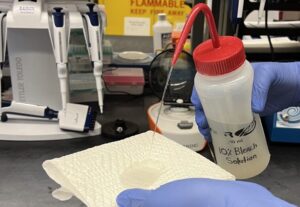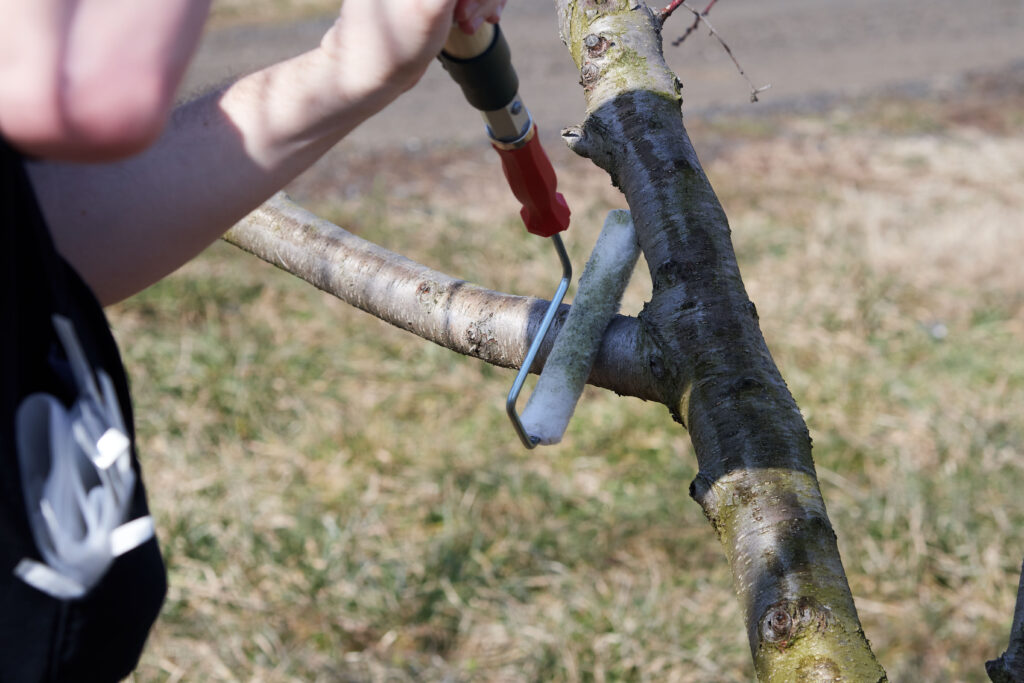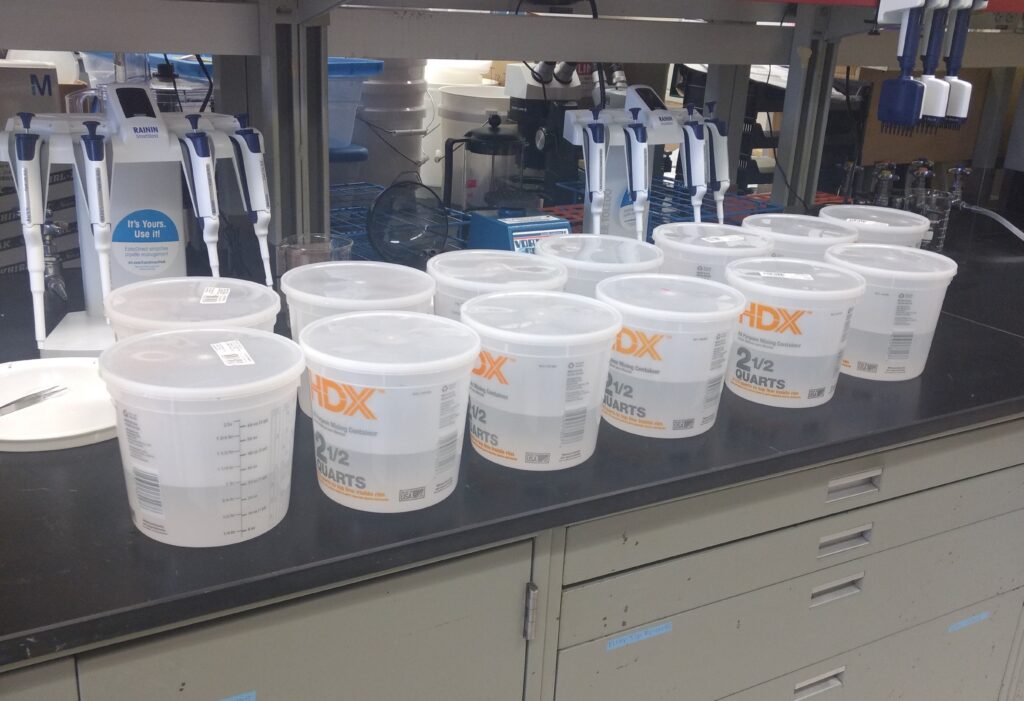Standard Practices: Contamination, Cleaning, & Controls
eDNA is an incredibly sensitive technology — species detection assays can detect down to just 2-3 copies of target DNA per reaction. While this sensitivity provides the ability to detect species at incredibly low abundance levels, it leaves eDNA samples vulnerable to contamination throughout the collection, extraction, and amplification process. Contamination occurs when DNA outside of the sampled medium is introduced to a sample. The introduction of DNA from the target species from other sources can yield a false positive result for a given sample.
To prevent contamination into a sample, all instruments and sampling equipment that come into contact with samples must be properly cleaned prior to use and between sampling efforts. DNA can be removed using a bleach solution, through flame sterilization, or via UV exposure.
Below, you’ll find some of the methods we use to decontaminate our sampling and laboratory materials.
Ensuring that equipment was properly cleaned requires the use of negative controls or blank samples, which contain only DI water or nothing at all, which are handled in a manner similar to the environmental samples. Any detections that occur in these negative control samples can be attributed to contamination. Utilizing negative controls between sampling sites and during lab processing, such as filter handling, DNA extraction, or PCR setup, allows the user to determine likely sources of contamination and which samples may be affected if contamination does occur.


